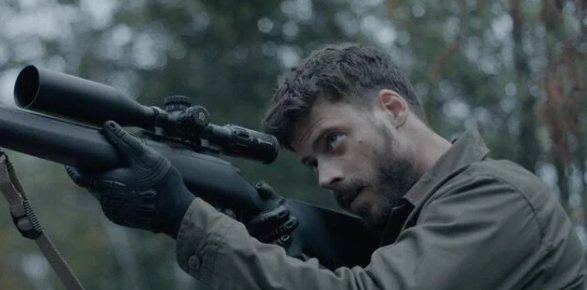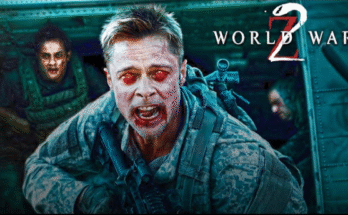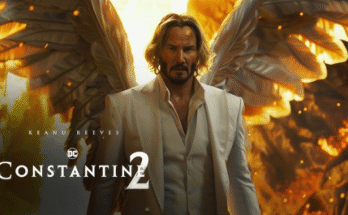Canadian Sniper is a chilling meditation on war, isolation, and the slow erosion of a soldier’s soul. This is not your typical action-packed shooter film — it’s something far more introspective, more haunting. Directed by Luke Sparke with a precise, unflinching eye, the film unfolds like a silent scream across snow-covered landscapes, anchored by a raw and restrained performance from Devon Sawa.

Set against the bitter cold of the Canadian border and extending into war zones far from home, the film follows a sniper on his final mission — a man whose internal fractures mirror the frostbitten wilderness he must navigate. Sawa plays him not as a hero, but as a haunted relic of duty, worn down by years of moral compromise and blurred targets. His every breath seems to carry the weight of ghosts.
Chris Hemsworth appears as the unit commander, injecting bursts of authority and charisma into the film’s otherwise icy tone. His chemistry with Sawa is compelling, with their ideological tension — duty versus doubt — forming one of the film’s emotional cores. Scarlett Johansson, in a smaller but impactful role as a military intelligence officer, adds complexity to the narrative, playing someone who sees the sniper not just as a weapon, but as a wounded man worth saving.

Luke Sparke’s direction thrives on contrast — wide, desolate shots of winter silence are punctuated by intimate, shaky-camera moments of combat. When bullets fly, the action is brutal and fast, but never glorified. Instead, Sparke lingers on the aftershocks: the trembling hands, the quiet tears, the unbearable silence after the last shot lands.
The cinematography is one of the film’s strongest elements. Every frame is soaked in cold light and moral ambiguity. The snow becomes more than scenery — it’s a symbol of emotional numbness, of lives frozen in a perpetual state of survival. In these spaces, the line between enemy and ally becomes invisible, and so does the boundary between purpose and punishment.
The script doesn’t seek easy answers. Through quiet dialogue and long, wordless stares, it confronts the question of whether there’s still room for humanity when one becomes a tool of war. Sawa’s character, nameless for most of the film, becomes a stand-in for all the soldiers lost in plain sight — respected, decorated, but fundamentally hollowed out.

What sets Canadian Sniper apart is its psychological focus. PTSD is not presented as a postscript but as the beating heart of the film. In flashbacks and subtle visual cues — a trembling trigger finger, a hallucinated snowfall in a desert — the film captures the slow unraveling of a man trained too well to feel nothing.
The final act is a gut punch. A mission gone awry becomes a crucible where past and present collide, and the sniper must decide whether his final shot will end a war or himself. It’s a moment both devastating and redemptive — a reminder that in the most desolate corners of conflict, even a single act of choice can echo like a rifle crack through eternity.
With its slow-burn pacing and heavy emotional toll, Canadian Sniper may not appeal to those looking for a fast-paced war film. But for viewers willing to embrace its bleak beauty and moral weight, this is a powerful and necessary watch — a portrait of war’s cost drawn in frost and silence.

A quiet triumph in a loud genre, Canadian Sniper doesn’t just hit its mark — it buries it in your heart and leaves it there, pulsing.



